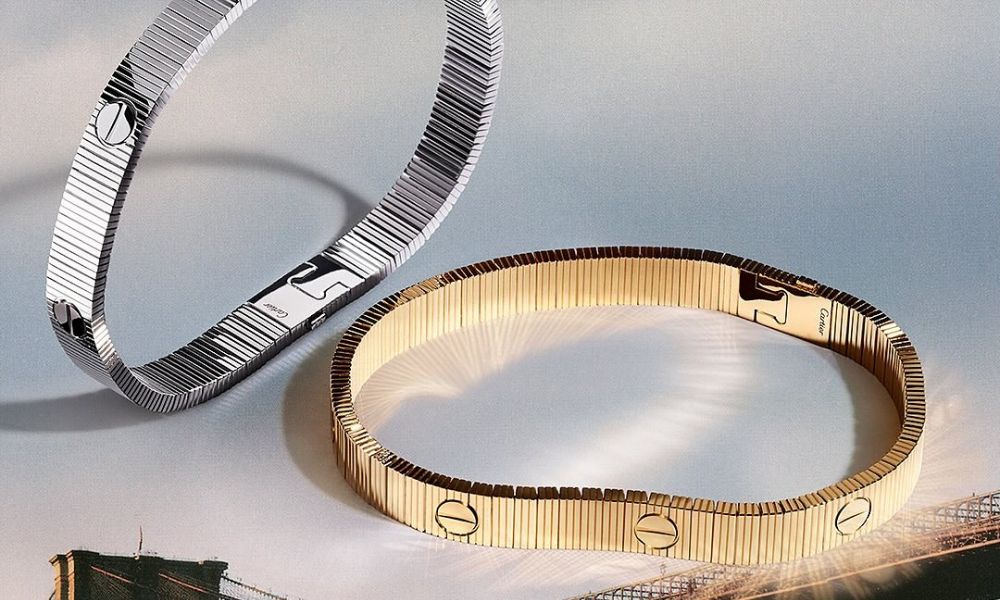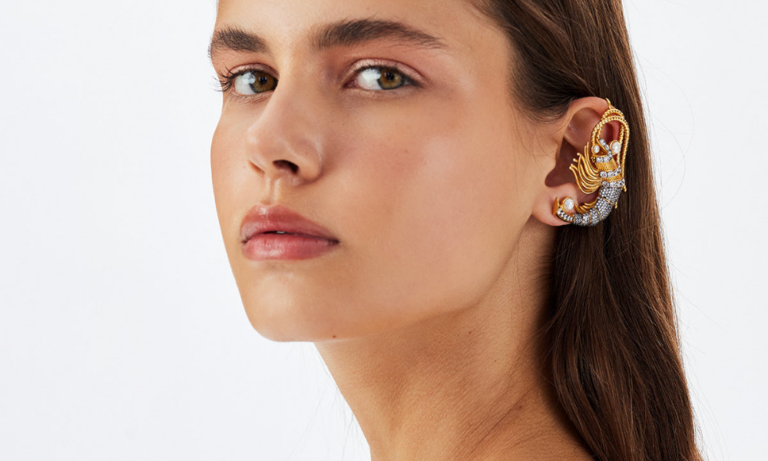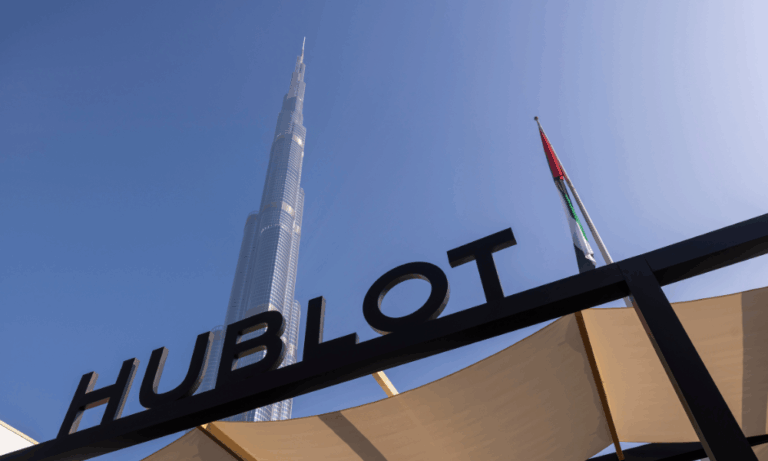In jewellery, few designs have managed to transcend mere ornament and become cultural shorthand. Cartier’s ‘Love’ bracelet, conceived in New York in 1969 by Aldo Cipullo, is one such creation. Oval in shape, secured with visible screws and fastened by a screwdriver, it was a radical departure from the era’s traditions of parades of diamonds and ceremonial grandeur. Love, Cipullo suggested, could be locked in place, made tangible, worn every day.
More than half a century later, Cartier is revisiting this icon, not with a nostalgic reprise but with a deliberate act of reinvention. The Maison’s newly unveiled ‘LOVE Unlimited’ is the first supple version of the bracelet, crafted from over 200 miniature components that curve fluidly around the wrist. Its form remains recognisable—the circle of eternity marked with the unmistakable screw motif—but its movement brings an entirely new chapter to a story already etched into design history.
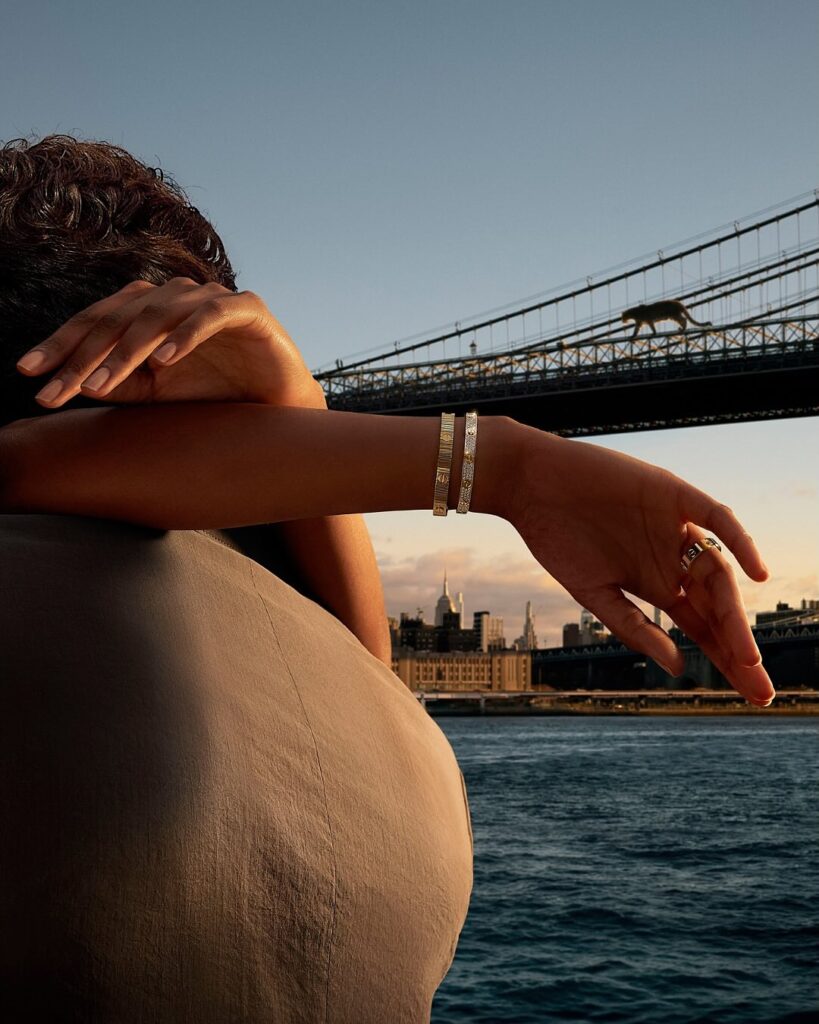
When the ‘Love’ bracelet first appeared, it was disruptive. In 1969, Cartier offered not excess but concept, and the piece quickly became emblematic of shifting cultural codes. It suited the sharp tailoring of the 1970s as much as the stripped-down minimalism of the 1990s, its design proving remarkably elastic in meaning. To wear one was to engage in a dialogue between permanence and rebellion, attachment and independence.
‘LOVE’ Unlimited picks up this thread. Its gadroons—subtle vertical ridges along the bracelet—are not decoration but engineering, signalling articulation and fluidity. Cartier has managed to keep the bracelet’s uncompromising visual identity intact while allowing it to move, a feat of technical precision as well as aesthetic restraint.
Cartier’s Director of Image and Heritage, Pierre Rainero, has framed this new design as an exploration of sensuality. When worn, the bracelet feels as though it does not move at all, yet it flows with the body. Available in yellow, rose, and white gold, with discreet clasps that invite doubling, linking, or layering, the piece adapts to individual expression in ways its predecessor did not. In a cultural moment that prizes flexibility, fluidity, and self-invention, this evolution feels less like an update than an inevitability.
The Love bracelet has always embodied a paradox: the permanence of its screws set against the changing ways we interpret love and identity. With ‘LOVE Unlimited,’ Cartier acknowledges that permanence today is less about rigidity and more about the ability to move, adapt, and still remain whole.
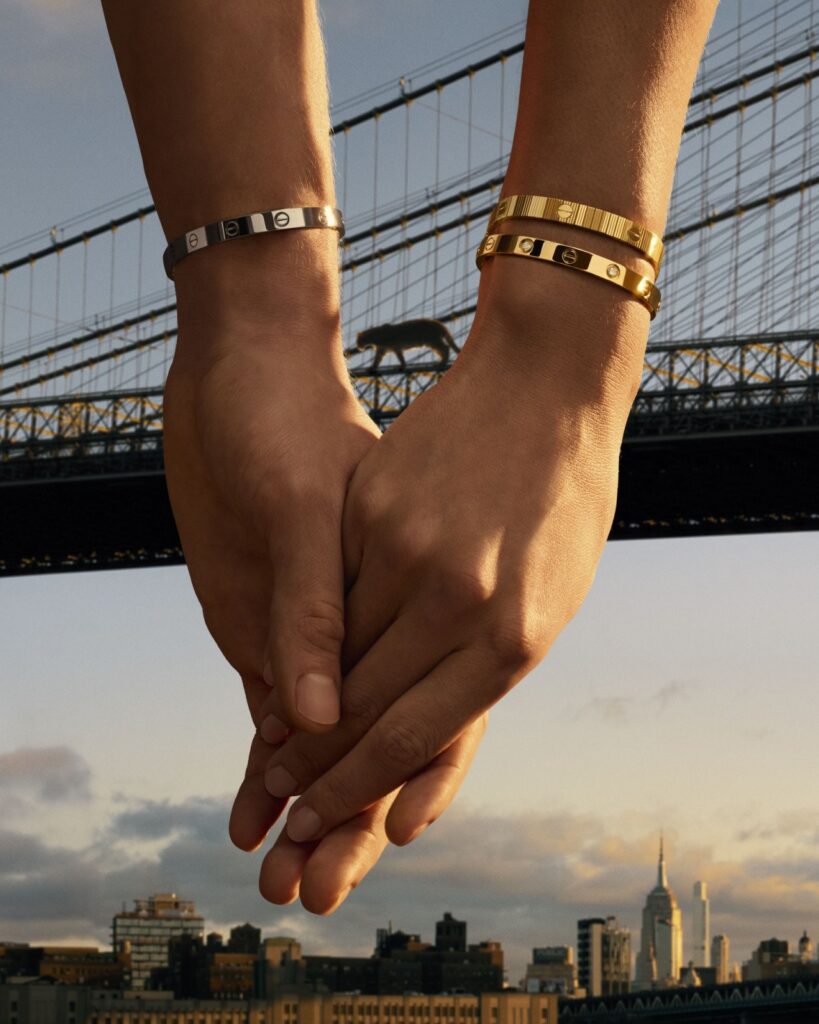
This is not simply a design story. It is a reflection of how heritage houses can engage with the demands of the present without severing ties to their past. The screw still signifies attachment; the circle still stands for eternity. But the way we wear, interpret, and live with symbols of love has changed. Cartier, once again, has managed to keep pace with that change.
The saga is not over. It is, quite fittingly, unlimited.
ALSO READ: OBSESSED THIS WEEK: OUR EDITOR’S BRAND CRUSH IS ANИAKIKI.
